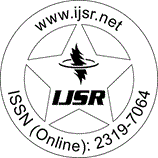Downloads: 142 | Views: 698 | Weekly Hits: ⮙1 | Monthly Hits: ⮙1
Dissertation Chapters | Management | India | Volume 4 Issue 10, October 2015 | Popularity: 6.5 / 10
Employee Absenteesim in Indian Industries
Dr. S. Rabiyathul Basariya
Abstract: It refers to workers absence from their regular task when he is normally schedule to work. The according to Websters dictionary Absenteeism is the practice or habit of being an absentee and an absentee is one who habitually stays away from work. According to Labour Bureau of Shimla Absenteeism is defined as the total man shifts lost because of absence as percentage of total number of man shifts scheduled to work. In other words, it signifies the absence of an employee from work when he is scheduled to be at work. Any employee may stay away from work if he has taken leave to which he is entitled or on ground of sickness or some accident or without any previous sanction of leave. Thus absence may be authorised or unauthorised, willful or caused by circumstances beyond ones control. Maybe even worse than absenteeism, it is obvious that people such as malingerers and those unwilling to play their part in the workplace can also have a decidedly negative impact. Such team members need individual attention from front line supervisors and management.
Keywords: employee, absenteeism, control, stress, routine, job satisfaction
Edition: Volume 4 Issue 10, October 2015
Pages: 141 - 156
Please Disable the Pop-Up Blocker of Web Browser
Verification Code will appear in 2 Seconds ... Wait
Click below to Watch Video Lecture of Above Article
